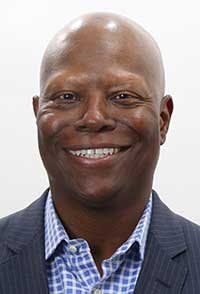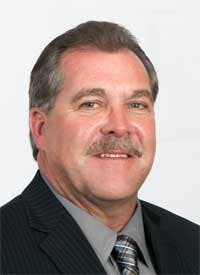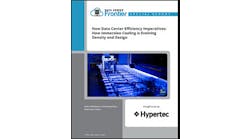Today we continue our Data Center Executive Roundtable, a quarterly feature showcasing the insights of thought leaders on the state of the data center industry, and where it is headed. In today’s discussion, our panel of experienced data center executives – Jakob Carnemark of Aligned Energy, Robert McClary of FORTRUST, Rick Crutchley of IO, Dan Papes of Digital Realty and Brian Kortendick of BASELAYER – explore the the market for renewable energy and the industry’s progress on using solar and wind energy to support data center energy needs.
The conversation is moderated by Rich Miller, the founder and editor of Data Center Frontier.
Data Center Frontier: How is the pricing and availability of renewable energy impacting your data center business? Are customers being more specific about what types of green power solutions they are seeking?
JAKOB CARNEMARK, Aligned Energy
Jakob Carnemark: More so than ever, the data center industry and large cloud players are focused on drastically curbing their data center water and energy use and moving to fully offset their carbon footprint with green power projects rather than just looking for carbon credits. Aligned Energy is continually looking to create and help foster the adoption of new technologies.
For example, we recently partnered with Swedish-based Climeon to bring a new green technology to the U.S. More than 50% of the world’s energy is exhausted to the environment as low-grade heat (below 190 degrees F), effectively making waste heat a largely available but unused resource. We now offer a new heat-to-power system that generates 100% green electricity from this low-grade waste heat (think steam from your cup of coffee).
Innovation is always an evolutionary process, and we must continue to identify new solutions and technologies that will create new green power sources for the benefit of the planet and each other.
RICK CRUTCHLEY of IO.
Rick Crutchley: There are growing demands and requests from enterprise customers for cost-effective clean energy to power their data centers. By aggregating the energy use of customers, a provider can apply scale efficiencies to data center operations and renewable energy procurement. Our goal is to provide customers with the best available options for reliable, renewable, and affordable energy.
Customers are inquisitive in terms of what options are available to them with regards to green power. We have an agreement where customers can opt-in to receive access to clean power generated by wind and solar plants at an incremental cost. This provides both access to renewable energy and price certainty, which has a financial benefit for IO and our customers.
Robert McClary, FORTRUST
Robert McClary: Renewable energy is more of a touchpoint with enterprise users in data centers. I think it’s less of a requirement when it comes to colocation. With colocation, they’re still looking for the best price and the highest availability and reliability. Some colocation data centers have access to renewable energy sources from their utility providers and some don’t. A lot depends on where you are geographically. We happen to be in a regulated utility, so our utility provider does do a significant percentage of their electrical generation through alternative energy sources. However, I think it’s becoming less of a checkpoint for a prospective colocation client.
I think also you’re going to see people looking at alternate means of uninterruptible power supplies in the form of kinetic energy versus traditional lead acid battery storage. The recycling, the nature of lead acid batteries, whether they’re wet-cell or they’re valve regulated and sealed, is -from a recycling standpoint- an environmental issue that we need to look at.
DAN PAPES of Digital Realty
Dan Papes: Distributed enterprises and mid-market leaders are becoming more focused on the “greening” of IT operations, as it can have significant effects on capex, as well as corporate reputation. Rather than building and operating their own data center facilities and operations, we’re continuing to see outsourcing. With increased visibility of IT operations, we’ll inevitably see an increase in companies choosing colocation and multi-cloud providers who are leading the field in sustainability.
In the past six months alone, Digital Realty put into place multiple renewable energy and sustainability initiatives as a part of our ongoing commitment to drive sustainable energy consumption within our data centers. We’re investing in sustainable development and capitalizing on innovative uses of green power. Our commitment to wind power will displace 100 percent of our U.S. colocation and interconnection energy usage, and will reduce our carbon footprint by approximately 275,000 metric tons annually. We also posted our Green Bond Use-of-Proceeds Statement, highlighting the use of the approximately $493 million of net proceeds raised through our issuance of a Green Bond in June 2015.
Atop all of that, our director of sustainability, Aaron Binkley, was named a Bold Award Champion in October, being recognized as, “a leader who developed innovative systems or processes with cutting-edge technology, solutions, or strategies to solve difficult commercial real estate challenges.” It’s been a great year for our sustainability program.
BRIAN KORTENDICK of BASELAYER
Brian Kortendick: In the past, sustainability groups were considered outside influencers in the IT and infrastructure decision making process. Going forward we see these groups playing a prominent role early and often in many data center decisions. Renewable energy availability and pricing are now tools these groups use to demonstrate long term environmental impact with short term economic benefit.
PUE will still be an area of focus, but customers are now looking to incorporate higher level green initiatives such as automated peak-saving and load-balancing. All of these green requirements will soon flow down to the colocation service providers, who traditionally have been focused on metrics like PUE.
TOMORROW: Our Executive Roundtable panel looks at the latest trends in the adoption of modular data centers.
Keep pace with the fact-moving world of data centers and cloud computing by following us on Twitter and Facebook, connecting with me on LinkedIn, and signing up for our weekly newspaper using the form below:








